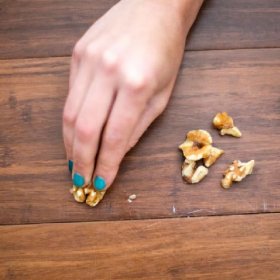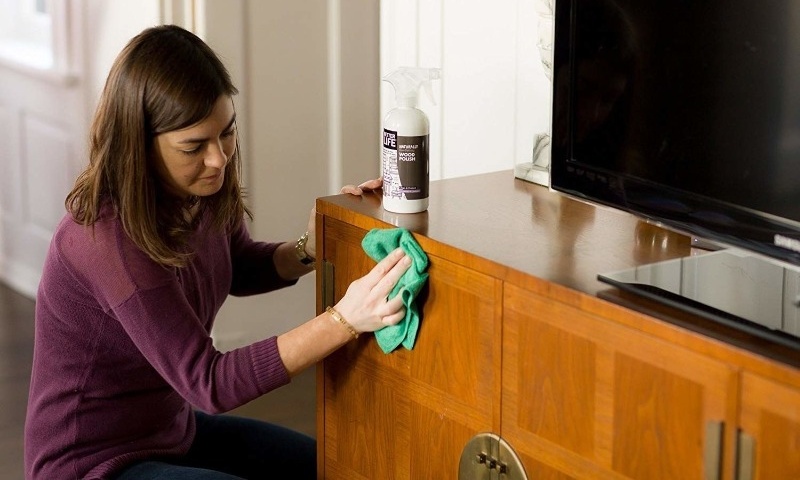How Walnuts Help Eliminate Scratches on Furniture

Damage to wooden or lacquered furniture is a real disaster for perfectionists. Unfortunate scratches, even if they are not too deep or noticeable, will significantly spoil life, because you know for sure that they are there. And if the damage is significant, then there is nothing to say: this spoils not only the appearance of the furniture, but also the room as a whole. It will help to mask scratches, if there are no specialized tools at hand, an ordinary walnut. This tool has long been used to mask damage on various surfaces.
What kind of furniture is suitable for
Walnut is a folk remedy that will help mask small defects. So expect a miracle from him on deep scratches is not worth it. The restoration method is suitable for almost all types of wooden furniture, with the exception of antique objects. It requires consultation with a specialist, self-restoration can cause serious damage to such furniture.
The use of this food product on dark grades of wood is also not recommended. A weak iodine solution will help here. He paints the defect well on a dark tree.
Serious dirt and deep scratches are difficult to mask even with special equipment, so here you will have to contact a professional restorer. If you are going to try any masking method (not necessarily a walnut) on some minor defects, then first try the composition on a small area of the piece of furniture. Make sure that the result you get there matches your needs, and only after that use the product on larger areas.
Using walnut kernels
For the restoration of small defects on wooden furniture, different parts of walnut are used. Most often they use the kernel of the nut. Note that with deep cracks the method will not help. It is only capable of slightly leveling small scratches.
How to mask defects on furniture:
- Remove the core from the shell, cut it into halves.
- Start rubbing the nut half defect. You need to rub in a circular motion throughout the scratched area.
- Walk half a nut along the scratch up and down several times.
- Leave the defect to brew for a few minutes. During this time, all the oils contained in the product penetrate the thickness of the wood and fill in the hated flaw.
- Polish the defect with a soft cloth.
- Wipe the surfaces of the furniture to be restored completely.
- Inspect the defect. If it has not completely stained, then repeat the procedure.
- Apply clearcoat over masked scratches.
Pecan can be an alternative to walnuts. The restoration procedure for this product is carried out in the same sequence.
You cannot use the nut masking method if you or any of your family members are allergic to these products.
The application of the peel of a young walnut
Quite often, instead of oil-saturated kernels, the peel of a young walnut is no less saturated with coloring compounds. It is also well suited for correcting shallow defects on various types of wooden furniture. But still for dark woods it is worth looking for an alternative way, for example, iodine, coffee or tea.
- Pick up a large young walnut.
- Peel it.
- Make a few shallow cuts on the nut skin.
- Such a skin needs to be scratched.
- Leave the defect to stand for several minutes so that the substances penetrate to the desired depth.
- Polish the defect with a soft rag. You can apply a clear varnish on top of the restored defect.
As in the case of the core, people who suffer from food allergies should abandon the idea of restoration using the peel of this product.
Why does a walnut close up scratches
The composition of this product includes many oils, as well as iodine. Iodine helps to stain the wooden surface in a dark color, and oils make this stain more soft and invisible against the general background. So restoration of a wooden surface with the help of a walnut helps only visually mask the defects, but not even them out.
If you prefer more radical methods of masking, then you can immediately use iodine solution. But first, be sure to read the recommendations of experts regarding staining furniture with iodine.
The choice of restoration method for wooden furniture should be based on the severity of the damage. Walnuts cannot mask deep cracks, chips, and extensive scratches. In cases of severe damage, it is better to contact a specialist restorer. However, minor defects can be somewhat hidden with the help of substances contained in the kernels and peel of the treat. Carry out the procedure carefully and do not forget to cover the surface with transparent varnish after restoration.


